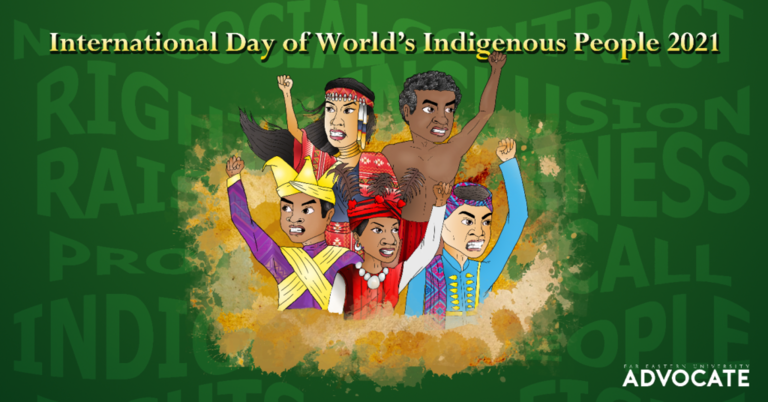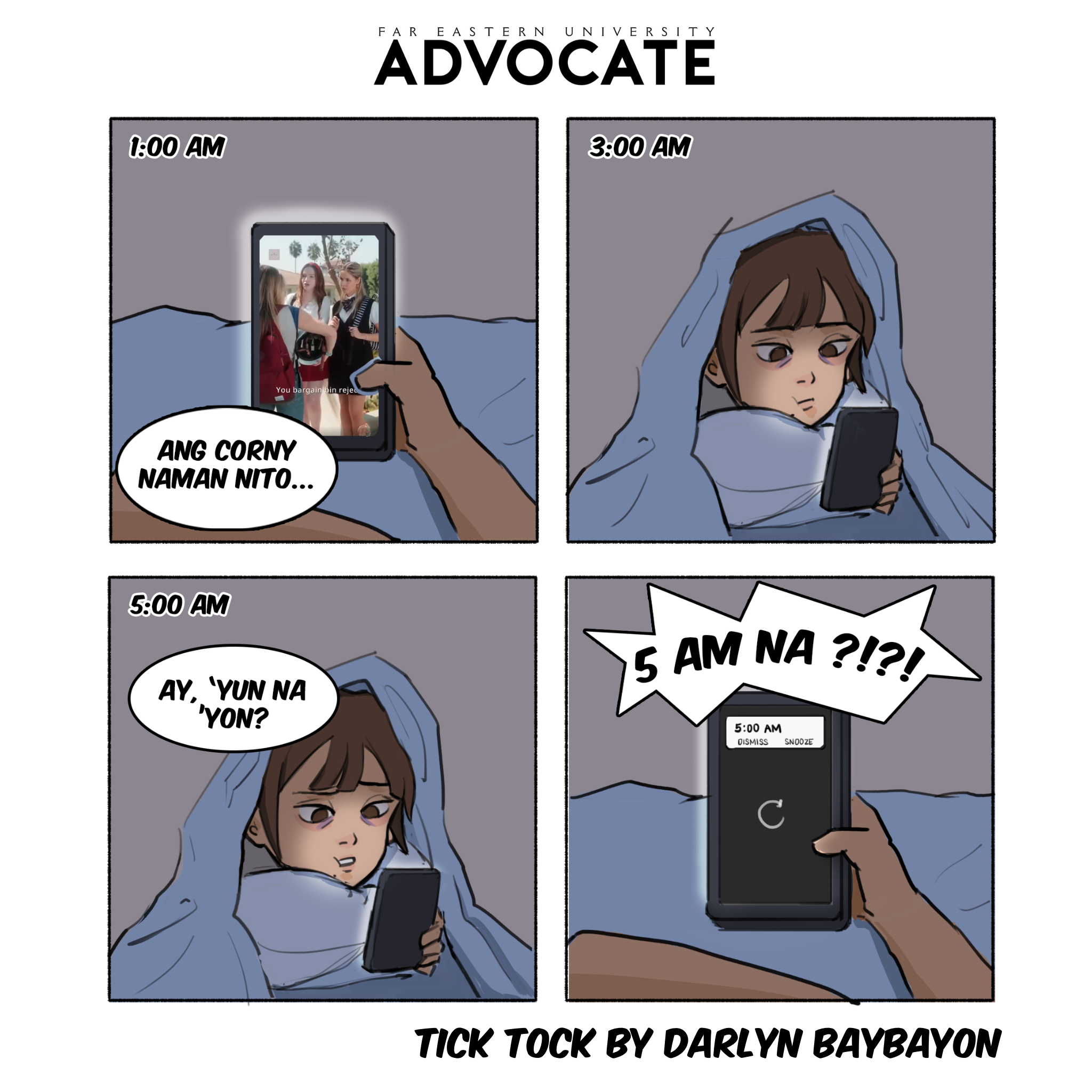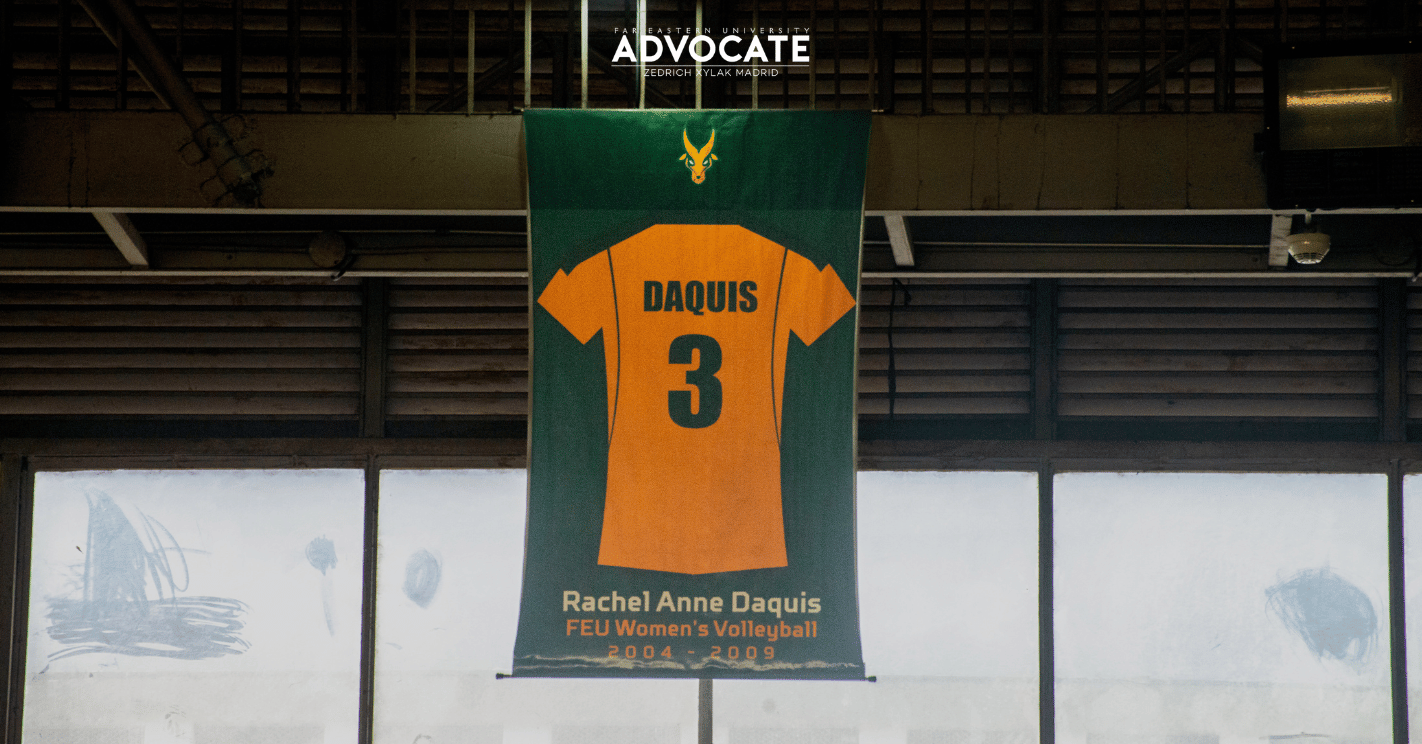
Preserving Philippine Culture: Celebrating World’s Indigenous Peoples’ Day 2021
FEU Advocate
August 09, 2021 04:01

As the world commemorates the significant contributions of indigenous groups, now is the perfect time to ponder the issues they are facing—the extinction of Philippine identity and culture brought by the rising demands of modernization.
Indigenous people are known to be the last fragments of the Philippines’ rich cultural heritage. The descendants of these indigenous groups are living proof of the life that the Filipinos once had, which sadly has been forgotten over time.
However, instead of taking care of these people, many of them are often neglected and ultimately abandoned. Change is inevitable due to the rapid evolution of society, but are we willing to undermine our cultural identity for the sake of so-called “progress”?
Leaving No One Behind
Every August 9, the United Nations (UN) celebrates the International Day of the World’s Indigenous People, which started in 1994 to raise awareness and defend the rights of the world’s indigenous communities. This event also aims to highlight the significance and contributions of indigenous people—especially in culture, environment, and language—to their countries.
With this year’s theme, “Leaving No One Behind: Indigenous People and the Call for a New Social Contract,” the UN will celebrate this day by conducting and sharing projects and activities relevant to it. Its goal is for national governments to heed the calls of the indigenous communities in their countries when making new resolutions and laws.
In 2000, there were an estimated 6.3 million indigenous people in the Philippines, which increased to 14-17 million in 2013. Among the 108 million population of the country, 10% to 20% of them are composed of the different indigenous people across the Philippine islands, according to the International Work Group for Indigenous Affairs.
Although they adhere to their traditional practices, it can be seen that indigenous communities continue to grow in their environments and prosper through their time-honored ways. This is why the UN calls for their inclusion, participation, and approval in the constitution of a system that aims to benefit everyone.
However, in many countries, including the Philippines, even though indigenous communities have proven that they can have independent governance and take care of their environment, they are still being driven out of their homes and stripped of their geographical culture. With these in mind, it is imperative that their safety and freedom be considered in future and existing legislation of the country.
It is high time for national leaders to take action in preserving and nurturing indigenous communities and their cultures, rather than driving them to the sidelines and furthering them as minorities.
Indigenous People Then and Now
News reports are plagued with unjust stories directed towards indigenous communities—red-tagging, closure of their schools, community displacements, killings—and every day, these people have to fight for their lives and culture against leaders who vowed to protect them.
I-Witness’ documentary “Tasaday” explores the life of the Tasaday community which garnered international attention in the 1970s as Presidential Assistance on National Minorities (PANAMIN) Head Manuel "Manda" Elizalde and Former President Ferdinand Marcos claimed them to exist way back in the Stone Ages.
According to an article by The Philippine Star, Elizalde asserted that the people of Tasaday were “isolated, uncorrupted and existed in the rainforests and caves,” without knowledge of the developed world. However, critics of the administration speculated that Elizalde and Marcos were using the Tasadays’ international recognition as a distraction from the corruption, human rights violations, and general abuse of power occuring at the time.
To make things worse, the Tasadays were later ridiculed and labeled as hoaxes by Swiss journalist Oswald Iten. 20 years later, Filipino journalist Kara David went ahead on a two-day expedition to see it for herself.
Lobo, a member of the Tasaday group, expressed his resentment towards Elizalde who promised the ethnic group that they would help financially. Instead, the Tasadays were labeled as liars who were merely farmers posing as members of the group.
This led the people of Tasaday to go to Manila and prove that their existence is not a hoax. Even after this, the Tasadays were never the same again.
“Nagpunta kami ng Maynila para patunayan na kami ay totoo. Masama ang loob ko na sinabihan kaming hindi kami totoo (We went to Manila to prove that we are real. It was heartbreaking to hear them say that we were not real),” Lobo said in an interview with Kara David.
Unfortunately, the unfair treatment towards the indigenous groups can still be seen today. Other groups such as the Aetas and Lumads are experiencing the same struggles.
The Bases Conversion and Development Authority (BCDA) had begun building New Clark City, aiming to decongest Metro Manila and provide new avenues in Northern Luzon. But to make way for the project, thousands of people are to be displaced and are threatened to lose their homes.
In an article by The Diplomat, the displacement included at least 500 families from the Aeta group. They received a letter claiming that the group was living on land owned by the government.
However, Tribal chieftain Petronilla Capiz Munoz argued that they lived in the area long before the Spaniards arrived in the Philippines. The chieftain also claimed that their family inherited 8,000-hectares of land from their ancestors.
“We are not squatters. When our ancestors first came to Capas, they named all the places you can find in this land. They named this village Sapang (stream) Kawayan (bamboo) because they saw abundant bamboo trees along the stream,” the tribal leader said in an interview with The Diplomat.
On the other hand, members from the Lumad tribe have a turbulent relationship with the government, with the latter asserting that Lumad schools were being used as training centers for the New People’s Army (NPA).
According to Rappler, a rescue operation was conducted by the Department of Social Welfare and Development (DSWD) and the Armed Forces of the Philippines (AFP) at the University of San Carlos-Talamban Campus (USC) last February 15, 2021. They took at least 26 people into custody, all of which are members of the Lumad group. However, according to Save Our Schools (SOS) Network, a non-government organization focused on children’s rights, the police "raided" the Lumad school and refuted it was a "rescue" operation.
At least 178 Lumad schools have been shut down since 2016, according to SOS Network. However, this is just the tip of an iceberg for the Lumads, as there have been many reports of killings for the past several years.
One of the most recent killings is the death of three Lumad farmers in Surigao del Sur. They were killed by alleged members of the 3rd Special Forces Battalion of the Philippine Army. Angel Rivas, a Grade 6 student, was the youngest victim of the encounter and was accused of being a member of the NPA.
These are just some of the many adversities that the indigenous people are battling, and as much as they want to express their outcries, it seems like the government is not listening.
Insufficient Protection for Indigenous Communities
The Republic Act 8371, also known as the Indigenous Peoples’ Rights Act (IPRA) of 1977, recognizes, protects, and promotes the rights of indigenous communities. Nonetheless, these groups are still enduring countless injustices done to them.
The IPRA “support and respect the indigenous peoples’ cultural identity.” Yet, according to an article by Rappler in 2019, 55 Lumad schools—most of which were established to give indigenous groups in remote areas access to education—were forced to close due to the alleged teaching of “communist beliefs”.
In these schools, where indigenous children are taught their culture, traditions, and beliefs, buildings were destroyed, and textbooks were torn.
Furthermore, the IPRA “respect their [indigenous communities] right to their lands,” and yet 500 Aeta families were displaced from their homes following the proposed construction of the New Clark City in Tarlac, according to an article by the Philippine Star. At the same time, Lumad tribes are continuously being displaced due to mining operations in Mindanao.
After all, indigenous communities should be unbothered by the fast-paced and modern life in the cities. However, along with the challenges brought by modernization, given that it caters to the lifestyle of the metropolitans, the indigenous people are having a difficult time finding their place in society—educational systems being offered to indigenous people are lackluster compared to those in Manila, employments demand elaborate requirements to be qualified for work, and healthcare is inaccessible as hospitals are far-off and medicines are expensive.
So, as much as they want to maintain their way of life, it becomes challenging to preserve their identity without compromising their own needs. Despite being minorities, they, too, are a part of our nation—they are our people, and their right to freely express their customs while providing their basic needs, must be protected.
In line with this year’s theme, the Filipino people as a whole must collectively help to protect the descendants of a culture that is at great risk of being forgotten. More than ever, the indigenous people need the support of everyone in fighting for their rights, which should have never been deprived from them in the first place—or at the very least, help push for the amendment of a more inclusive constitution to protect these significant people that have given much to the country and the culture.
- John Vincent Cruz and Mikaela Anne Laxa
(Illustration by Mary Vel Custodio/FEU Advocate)
RELATED ARTICLE: https://feuadvocate.net/pagtuturo-at-pakikibaka-pagpapasiklab-ng-adhikain-tungo-sa-inklusibong-edukasyon/
References:
GMA Public Affairs. (2017, August 12). I-Witness: “Tasaday,” a documentary by Kara David (full episode) [Video]. YouTube. https://www.youtube.com/watch?v=qXs7MIAFVo0
Beltran, B. (2020, January 8). Philippines’ ‘Smart City’ Threatens Tribal Displacement. The Diplomat. https://thediplomat.com/2020/01/philippines-smart-city-threatens-tribal-displacement/
International Work Group for Indigenous Affairs. Indigenous Peoples in the Philippines. https://www.iwgia.org/en/philippines.html
Cabico, G. (2019, December 11). Senate urged to probe displacement of Aeta communities by New Clark City. Philippine Star. https://www.philstar.com/headlines/2019/12/11/1976180/senate-urged-probe-displacement-aeta-communities-new-clark-city
Rappler. (2021, February 16). Rappler Talk: Lumad students under attack. https://www.rappler.com/nation/interview-mon-sy-lumad-students-under-attack
Diño, N., & Cruz, M. S. (2020, September 18). Dwindling numbers: Lumad schools continue to suffer closures, attacks during pandemic. Rappler. https://www.rappler.com/moveph/lumad-schools-continue-to-suffer-closures-attacks-coronavirus-pandemic
Mindanews. (2021, June 17). 3 Lumad farmers killed in Surigao del Sur. https://www.mindanews.com/top-stories/2021/06/3-lumad-farmers-killed-in-surigao-del-sur/
Other Stories


FEU makes comeback goals to snatch win vs UST
- April 16, 2023 10:12

Taludtod ng Manghahabi
- August 23, 2023 05:44

Tick Tock
- January 13, 2025 19:45

Tams flex depth, chemistry in straight-set win vs Adamson
- March 08, 2025 14:18

FEU falls short against AdMU, still hopeful for Final Four
- April 29, 2022 12:56

FEU’s Final Four hopes ended by Ateneo blowout
- November 09, 2024 13:36

Press freedom is Academic freedom
- January 26, 2025 19:44

FEU asserts tenacity, buries AdU in 4-0 victory
- April 11, 2024 12:54

In case you miss her
- July 27, 2024 18:44